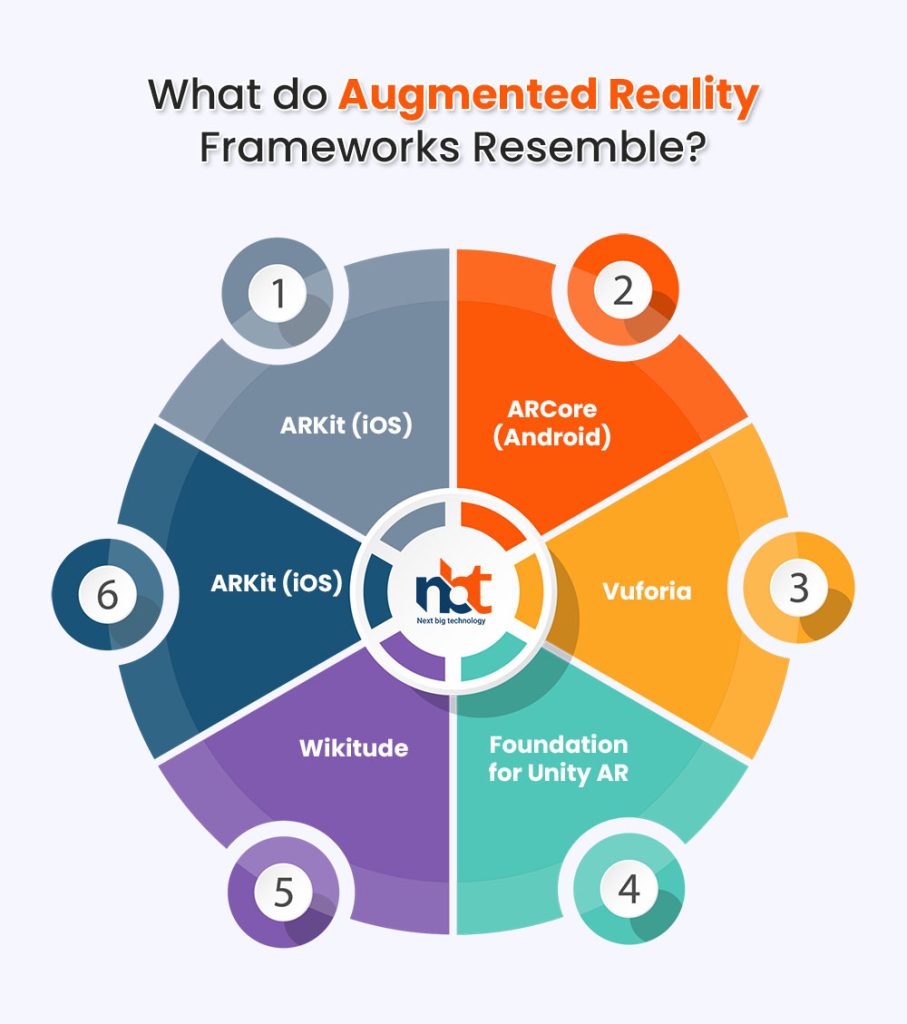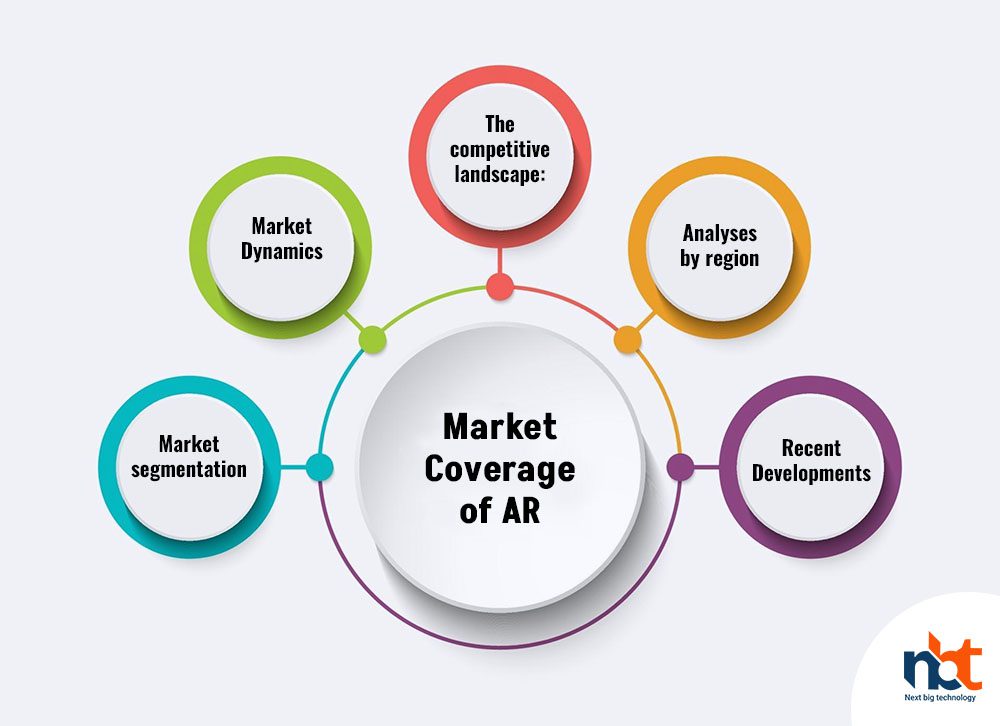For offering interesting and interactive experiences in various industries, including entertainment, education, healthcare, and retail augmented reality (AR) technology is quickly gaining popularity. Frameworks for augmented reality are crucial for app developers who wish to create reliable, high-performing AR applications. These frameworks offer a selection of instruments, resources, and APIs for building augmented reality content, monitoring, mapping real-world settings, and integrating with other technologies. This post will examine the top expanded reality frameworks for app development.
Table of Contents
What do Augmented Reality Frameworks Resemble?
A software platform known as an augmented reality framework allows programmers to build and use augmented reality applications. In addition to tracking and mapping actual physical settings, producing 3D visuals, and connecting with other technologies, it offers tools and APIs for creating AR experiences. Many devices, including smartphones, tablets, smart glasses, and other wearables, are supported by an AR framework.
Libraries, plugins, and SDKs are just a few formats in which AR frameworks are available. Some are open-source, while others are proprietary. A few factors influencing the choice of AR framework are the development platform, target market, application requirements, and budget.
Top Frameworks for Augmented Reality App Development
1. ARKit (iOS)
Apple created the mobile augmented reality framework called ARKit for iOS devices. It offers developers a set of tools and APIs to make high-quality AR experiences for iPhones and iPads. To track the location and orientation of the device, identify surfaces and objects in the environment, and include 3D models and animations, ARKit uses computer vision techniques.
A variety of augmented reality features, including plane identification, illumination estimation, world tracking, and picture recognition, are supported by ARKit. It also connects with other Apple products, like CoreML for machine learning, SceneKit for 3D modeling, and Metal for rendering images. In iOS 11 and later, ARKit is accessible and cost-free to utilize.
Integrating ARKit with Apple’s Xcode programming environment is one of its benefits. With Xcode and ARKit, developers can quickly construct AR applications. ARKit instantly recognizes faces, objects, and photos and has built-in machine-learning support.
2. ARCore (Android)
Google created the mobile augmented reality framework ARCore for Android smartphones. It offers a suite of tools and APIs to developers so they may create high-performance AR applications for tablets and smartphones. ARCore employs motion tracking, contextual awareness, and light estimates to produce immersive AR experiences.
Several AR functions, including plane detection, object recognition, motion tracking, and occlusion, are supported by ARCore. It also interfaces with other Google products, like Cloud Anchors for multi-user augmented reality experiences and TensorFlow Lite for machine learning. Available on Android 7.0 and later, ARCore is free to use.
One of its advantages is how ARCore integrates with Android Studio, Google’s development platform. The creation of AR applications is made easier for developers by ARCore and Android Studio. Real-time recognition of faces, objects, and images is possible with ARCore, which also has built-in machine learning capability.
3. Vuforia
A platform for augmented reality called Vuforia enables programmers to make AR applications for mobile devices, web browsers, and head-mounted displays. PTC first presented it in 2010, and since then, it has grown to be one of the most well-liked AR frameworks for app development. Developers may create high-quality AR apps using the robust tools and features offered by Vuforia.
Vuforia tracks markers and superimposes digital material over real-world objects using sophisticated computer vision techniques. Moreover, it offers markerless AR experiences, giving it flexibility and pliability. Many light sources are supported by Vuforia, enabling developers to design realistic lighting environments for AR objects.
Vuforia’s adaptability with other platforms, such as iOS, Android, and Unity, is one of its benefits. Machine learning is also integrated into Vuforia.
4. Foundation for Unity AR
The Unity AR Foundation is a framework for creating augmented reality (AR) applications that can run on iOS, Android, and web browsers. Unity Technologies first presented it in 2018, and since then, it has grown to be one of the most well-liked AR frameworks for app development. Developers may create high-quality AR apps using the robust tools and capabilities offered by Unity AR Foundation.
Unity AR Foundation uses cutting-edge computer vision technologies to track the device’s position and orientation with respect to the outside world. It is adaptable and versatile because it enables marker-based and markerless AR experiences. Several light sources are supported by the Unity AR Foundation, allowing the developers to design realistic lighting environments for AR objects.
Unity AR Foundation’s integration with Unity, a well-known game creation engine, is one of its benefits. With Unity and the AR Foundation, developers can quickly create AR applications. The Unity AR Foundation can recognize faces, objects, and photos in real-time and has built-in machine-learning capabilities.
5. Wikitude
An AR framework called Wikitude enables programmers to create AR experiences for mobile devices and web browsers. Wikitude GmbH first presented it in 2008, and since then, it has grown to be one of the most well-liked AR frameworks for app development. Wikitude offers developers robust tools and functionality for creating top-notch AR applications.
Using sophisticated computer vision techniques, Wikitude tracks markers and applies digital material to real things. Moreover, it offers markerless AR experiences, giving it flexibility and pliability. Many light sources are supported by Wikitude, enabling developers to design realistic lighting environments for AR objects.
Wikitude’s flexibility with several platforms, such as iOS, Android, and web browsers, is one of its benefits. Wikitude also has built-in assistance for mechanical and ML.
Also Read : How Much Does Augmented Reality Virtual Reality App Development Cost?
Benefits of a Framework for Augmented Reality
- Time and effort are saved because augmented reality frameworks give programmers ready-made tools and functionality. The development process moves faster since developers don’t have to start from zero.
- Consistency: Augmented reality frameworks offer a consistent user experience across many platforms and devices. Error risk is decreased, and the user experience is enhanced.
- Access to sophisticated features: Frameworks for augmented reality provide users access to complex capabilities including 3D rendering, computer vision, and machine learning. These functionalities are challenging to build from the ground up, but with an AR framework, developers can quickly add them to their apps.
- Platform compatibility: The majority of augmented reality frameworks are cross-platform, working with iOS, Android, and web browsers. This enables developers to build AR applications that work on a variety of hardware and software.
Also Read : Why Should You Use Augmented Reality Technology for Your Business?
Employing an augmented reality framework has the following drawbacks too:
- Minimal customization: Augmented reality frameworks offer pre-built tools and functions, which reduces customization. The software may not be as customizable as the developers would want.
- Performance problems: Performance problems with augmented reality frameworks are possible, especially when managing intricate 3D models or real-time marker tracking. Poor user experience and decreased app performance may result from this.
- Dependence on third-party software: Frameworks for augmented reality that rely on third-party software may experience compatibility problems and depend on additional software. The complexity of the development process may rise as a result.
Market Coverage of AR
With applications in a variety of fields, including gaming, healthcare, retail, education, and industrial training, the augmented reality (AR) business is a quickly expanding industry. MarketsandMarkets estimates that the global AR market will grow at a compound yearly growth rate (CAGR) of 56.6% from $4.21 billion in 2021 to $97.76 billion by 2026.
These important topics are covered in the report:
- Market segmentation: It includes technology, device type, offering, application, and geography for the AR market. The market is divided into marker-based and markerless AR segments depending on technology. The market is divided into smartphone, tablet, and smart glasses categories based on device type. The market is divided into hardware and software by providing. Gaming, healthcare, retail, and education are the market segmented according to application.
- Market Dynamics: The paper examines the major trends, problems, and opportunities in the AR industry. Three major factors include the expanding use of augmented reality in the retail and e-commerce industries and the increased appeal of augmented reality-based games. The paper also addresses issues facing the expanded reality market, such as the expensive cost of a device and the absence of standardized increased reality content.
- The competitive landscape: It is covered in detail in the research, which also includes profiles of the top AR vendors, including Google, Microsoft, Apple, PTC, Magic Leap, and Vuzix. Their company plans, product lines, financials, and current advancements are all examined in the research.
- Analyses by region are provided for the AR markets in North America, Europe, Asia Pacific, and the rest of the world (RoW). Due to the growing use of AR across a variety of industries, including healthcare, retail, and education, North America is anticipated to lead the AR market over the projected period. Due to the growing usage of AR in the gaming and entertainment sectors, Asia Pacific is predicted to have considerable development throughout the projected period.
- Recent Developments: The study analyses recent mergers and acquisitions, joint ventures, and product launches that have taken place in the AR industry. For instance, Apple unveiled its augmented reality headgear in 2021; it was scheduled for availability in 2022. PTC purchased Onshape, a provider of cloud-based CAD software, in 2020.
Conclusion
Augmented reality frameworks give programmers strong tools and functionalities for creating top-notch AR applications. The most popular frameworks for building AR apps for iOS and Android devices, respectively, are ARKit and ARCore. Popular frameworks for creating AR applications across several platforms include Wikitude, Unity AR Foundation, and Vuforia. These frameworks save time and effort by giving developers pre-built features and tools. They do, however, also have significant drawbacks, such as restricted customizability and Performance problems.
Thanks for reading our post “Best App Development Framework for Augmented Reality”. Please connect with us if you need more information regarding Augmented Reality Frameworks.












